Ijraset Journal For Research in Applied Science and Engineering Technology
- Home / Ijraset
- On This Page
- Abstract
- Introduction
- Conclusion
- References
- Copyright
Formulation and Evaluation of Polyherbal Toothpaste: To Overcome Oral Problems
Authors: Madhuri Khandgaonkar, Bhagyashri Gayke, Anjali Shinde
DOI Link: https://doi.org/10.22214/ijraset.2023.54838
Certificate: View Certificate
Abstract
Polyherbal toothpaste with natural ingredients is more acceptable in public opinion than chemical-based synthetic formulations in the current oral dental care scenario due to their safety and efficacy in reducing dental caries and preventing other dental disorders to which this generation is prone. In this composition, we use, clove, Neem, pomegranate peel , all of which have never been used before in any research. These extracts have anti-ulcer, anti-caries, anti-bacterial, and remedial properties, as well as certain unique properties including anti-cancer and anti-fungal. Herbal toothpastes were evaluated to determine important physical characteristics such as pH, stability, extrudability, spread ability, foamability, and homogeneity to develop a more effective and stable product. The novelty of this project is to overcome teeth problems to minimizing adverse effect of synthetic drug by using polyherbal ingredients.
Introduction
I. INTRODUCTION
Herbal and herbal-based toothpaste has been used in ancient life for many years and is one of the most significant aspects of oral health care. 1 The manufacture and development of toothpaste formulations dates back to 300-500 BC in China and India. During that time, abrasives such as squashed bone, crumbled egg, and clam shells were used to clean teeth. In the nineteenth century, modern toothpaste compositions were created. Chalk and soap were added to those compositions after advancements in the realm of medicine. Following independence, multiple formulation developments of various detergents began, with sodium lauryl sulphate serving as an emulsifying agent. 1–5 The focus has switched in the current period to the release of active substances during formulation development in order to prevent and/or treat oral disease. Toothpaste is a dentifrice that is used to keep teeth clean, maintain their health, and improve their appearance. Toothpaste is primarily used to maintain oral hygiene, but it also functions as an abrasive, removing dental plaque and food particles from the teeth, assisting in the removal and/or veiling of halitosis, and releasing active chemicals like fluoride to help prevent tooth and gum disease (E.g., Gingivitis). Most of the cleaning is done by the toothbrush’s mechanical action, with the help of excipients included in toothpaste. 6–8 Many herbal formulations are particularly successful because they contain active chemical components like polyphenols, gums, alkaloids, glycosides, and other compounds. Different biological functions have also been explored for these formulations. This expands the possibilities for developing and testing new herbal.
A. History
Since 5000 BC, the Egyptians made a tooth powder, which consisted of powdered ashes of ox hooves, myrrh, powdered and burnt eggshells, and pumice. The Greeks, and then the Romans, improved the recipes by adding abrasives such as crushed bones and oyster shells. In the 9th century, Iraqi musician and fashion designer Ziryab invented a type of toothpaste, which he popularized throughout Islamic Spain. The exact ingredients of this toothpaste are unknown, but it was reported to have been both "functional and pleasant to taste".[81] It is not known whether these early toothpastes were used alone, were to be rubbed onto the teeth with rags, or were to be used with early toothbrushes, such as neem- tree twigs and miswak. During Japan's Edo period, inventor Hiraga Gennai's Hika rakuyo (1769) contained advertisements for Sosekiko, a "toothpaste in a box." Toothpastes or powders came into general use in the 19th century.
- What’s in your toothpaste? A look at 5 common ingredients
Over the course of a year, you’ll end up spending over 24 hours brushing your teeth. But in all that time, have you ever thought about what toothpaste is made of? Here’s a look at five typical ingredients and why they’re in your toothpaste.
2. Fluoride
This mineral is key to fighting tooth decay. Fluoride makes the enamel of your teeth harder and more resistant to acid wear. To make sure your toothpaste contains fluoride, check the list of active ingredients for sodium fluoride, sodium Mon fluorophosphate or stannous fluoride. Only these three forms of fluoride are recognized by the Food and Drug Administration for cavity prevention. And a little fluoride goes a long way: Most toothpastes contain only 0.15% fluoride ion, or 1,500 parts per million.
3. Glycerol
This ingredient keeps toothpaste from drying out, gives it a consistent texture and helps it glide smoothly from the tube. Although it can go by multiple names — glycerol, glycerine or glycerine — it’s all the same molecule. When it’s not used in toothpaste, glycerol can also be added to processed foods such as yogurt, pre-cooked rice, and peanut butter.
4. Sorbitol
Sorbitol plays two parts: Along with glycerol, it helps hold the toothpaste together, and it’s also a sweetening agent. Unlike sugar, however, sorbitol does not cause cavities. It can also be used as a sugar substitute for people with diabetes.
5. Calcium Carbonate
This common abrasive helps remove plaque, debris and surface stains. These abrasives clean the surface of your tooth. They’re the reason your teeth feel so smooth and clean after brushing. They can also help make your smile whiter!
Besides calcium carbonate, other types of abrasives in toothpaste include dehydrated silica gels, hydrated aluminium oxides, magnesium carbonate, phosphate salts and silicates. These abrasives are rough enough to get the plaque off, but gentle enough to avoid damage to your enamel.
6. Sodium Lauryl Sulphate
This ingredient is a detergent, creating a bubbly foam like in soap and shampoo. Sodium lauryl sulphate can cause mouth irritation and canker sores. If you suffer from frequent mouth sores and you suspect your toothpaste might be the cause, look for an SLS-free alternative.
7. Overview
Most oral health conditions are largely preventable and can be treated in their early stages. Most cases are dental caries (tooth decay), periodontal diseases, tooth loss and oral cancers. Other oral conditions of public health importance are orofacial clefts, Noma (severe gangrenous disease starting in the mouth mostly affecting children) and oro-dental trauma. The WHO Global Oral Health Status Report (2022) estimated that oral diseases affect close to 3.5 billion people worldwide, with 3 out of 4 people affected living in middle-income countries. Globally, an estimated 2 billion people suffer from caries of permanent teeth and 514 million children suffer from caries of primary teeth. Prevalence of the main oral diseases continues to increase globally with growing urbanization and changes in living conditions. This is primarily due to inadequate exposure to fluoride (in the water supply and oral hygiene products such as toothpaste), availability and affordability of food with high sugar content and poor access to oral health care services in the community. Marketing of food and beverages high in sugar, as well as tobacco and alcohol, have led to a growing consumption of products that contribute to oral health conditions and other NCDs.
8. Risk Factors
Most oral diseases and conditions share modifiable risk factors such as tobacco use, alcohol consumption and an unhealthy diet high in free sugars that are common to the 4 leading NCDs (cardiovascular disease, cancer, chronic respiratory disease and diabetes). In addition, diabetes has been linked in a reciprocal way with the development and progression of periodontal disease . There is also a causal link between the high consumption of sugar and diabetes, obesity, and dental caries.
9. Oral Health Inequalities
Oral diseases disproportionally affect the poor and socially disadvantaged members of society. There is a very strong and consistent association between socioeconomic status (income, occupation and educational level) and the prevalence and severity of oral diseases. This association exists from early childhood to older age and across populations in high-, middle- and low-income countries.
B. Anatomy of Teeth
Human teeth function to mechanically break down items of food by cutting and crushing them in preparation for swallowing and digesting. As such, they are considered part of the human digestive system. Humans have four types of teeth: incisors, canines, premolars, and molars, which each have a specific function. The incisors cut the food, the canines tear the food, and the molars and premolars crush the food. The roots of teeth are embedded in the maxilla (upper jaw) or the mandible (lower jaw) and are covered by gums. Teeth are made of multiple tissues of varying density and hardness.
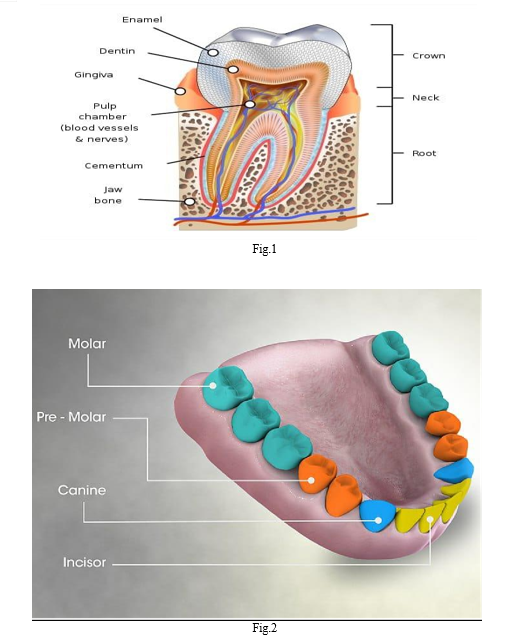
- A Tooth Consists of Two Main Structures
a. Crown
This is the part of your tooth that you can see — the portion above your gums. Enamel — a hard, protective substance — covers your tooth crown.
Root. This is the part of your tooth that holds it in your jaw. You can’t see the root because your gums cover it. The root anchors your tooth to your periodontal ligament (the soft connective tissue that lines your tooth socket).
What are teeth made of?
Your teeth have four main layers, including:
b. Enamel
This is the protective outer layer of each tooth. Enamel helps shield your teeth from cavity-causing bacteria. Enamel is the hardest substance in the human body.
Dentin. Just underneath your enamel, there’s a layer of dentin. Dentin isn’t as strong as enamel. When missing enamel exposes dentin, your risk for cavities increases.
Cementum. Cementum covers your tooth root. Along with your periodontal tissues, it helps anchor your tooth firmly in your jaw.
c. Tooth Pulp
This is the innermost layer of your tooth. It contains nerves, blood vessels and connective tissues. Teeth
Teeth are hard structures located on the jaws in the mouth. There are four main types of teeth, and each one has a different shape and function.
2. The Four Main Types of Teeth Are
a. Incisors: Our incisors are eight teeth in the front center of our mouth (four on both the bottom and top). These are typically the first adult teeth that a child will get, coming in when the child is between six and eight years old. Incisors are the teeth that we use to bite into our food.
b. Canines: Our canines are the next teeth that develop in your mouth. we have four of them and they are our sharpest teeth, used for tearing apart food.
c. Premolars: Premolars are used for tearing and crushing food. Unlike our incisors and canines, premolars have a flat biting surface. We have eight premolars in total.
d.. Molars: our molars are your largest teeth. Their function is similar to that of the premolars, to grind, tear, and crush food. Molars have a large flat biting surface which makes them perfect for this job.
3. Diseases Of Teeth
a. Plaque
Plaque is a biofilm consisting of large quantities of various bacteria that form on teeth.[40] If not removed regularly, plaque build-up can lead to periodontal problems such as gingivitis. Given time, plaque can mineralize along the gingiva, forming tartar. The microorganisms that form the biofilm are almost entirely bacteria (mainly streptococcus and anaerobes), with the composition varying by location in the mouth.[41] Streptococcus mutans is the most important bacterium associated with dental caries.
Certain bacteria in the mouth live off the remains of foods, especially sugars and starches. In the absence of oxygen, they produce lactic acid, which dissolves the calcium and phosphorus in the enamel.[15][42] This process, known as "demineralisation", leads to tooth destruction. Saliva gradually neutralises the acids, which causes the pH of the tooth surface to rise above the critical pH, typically considered to be 5.5. This causes remineralisation, the return of the dissolved minerals to the enamel. If there is sufficient time between the intake of foods, then the impact is limited and the teeth can repair themselves. Saliva is unable to penetrate through plaque, however, to neutralize the acid produced by the bacteria.
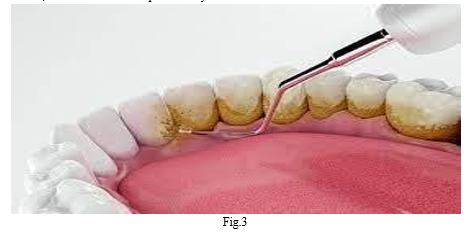
b. Caries (Cavities) Main Article: Dental Caries
Dental caries (cavities), described as "tooth decay", is an infectious disease which damages the structures of teeth. The disease can lead to pain, tooth loss, and infection. Dental caries has a long history, with evidence showing the disease was present in the Bronze, Iron, and Middle Ages but also prior to the neolithic period The largest increases in the prevalence of caries have been associated with diet changes. Today, caries remains one of the most common diseases throughout the world. In the United States, dental caries is the most common chronic childhood disease, being at least five times more common than asthma. Countries that have experienced an overall decrease in cases of tooth decay continue to have a disparity in the distribution of the disease. Among children in the United States and Europe, 60–80% of cases of dental caries occur in 20% of the population.
Tooth decay is caused by certain types of acid-producing bacteria which cause the most damage in the presence of fermentable carbohydrates such as sucrose, fructose, and glucose. The resulting acidic levels in the mouth affect teeth because a tooth's special mineral content causes it to be sensitive to low pH. Depending on the extent of tooth destruction, various treatments can be used to restore teeth to proper form, function, and aesthetics, but there is no known method to regenerate large amounts of tooth structure. Instead, dental health organizations advocate preventive and prophylactic measures, such as regular oral hygiene and dietary modifications, to avoid dental caries.
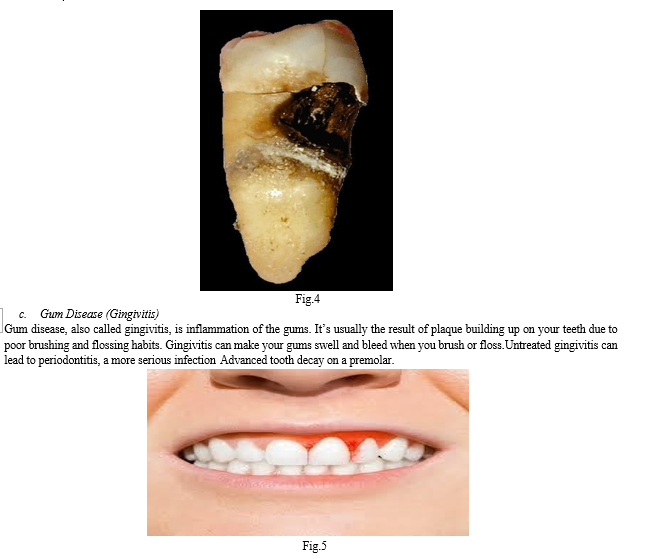
d. Periodontitis
As periodontitis progresses, the infection can spread to your jaw and bones. It can also cause an inflammatory response throughout the body. Periodontitis (per-e-o-don-TIE-tis), also called gum disease, is a serious gum infection that damages the soft tissue around teeth. Without treatment, periodontitis can destroy the bone that supports your teeth. This can cause teeth to loosen or lead to tooth loss.
4. What Is the Toothpaste?
Toothpaste is a paste or gel dentifrice used with a toothbrush to clean and maintain the aesthetics and health of teeth. Toothpaste is used to promote oral hygiene: it is an abrasive that aids in removing dental plaque and food from the teeth, assists in suppressing halitosis, and delivers active ingredients (most commonly fluoride) to help prevent tooth decay (dental caries) and gum disease (gingivitis). Owing to differences in composition and fluoride content, not all toothpastes are equally effective in maintaining oral health. The decline of tooth decay during the 20th century has been attributed to the introduction and regular use of fluoride-containing toothpastes worldwide. Large amounts of swallowed toothpaste can be toxic. Common colors for toothpaste include white (sometimes with colored stripes or green tint) and blue.
II. AIM AND OBJECTIVE
The polyherbal toothpaste showed a significant antimicrobial activity against all tested bacterium and yeast. to help the toothbrush in cleaning the tooth surface and to provide a therapeutic effect.
It helps fight the following - tartar and plaque, cavities, tooth decay, germs and bacteria, gingival attack. It also removes malodour. Containing extracts of Neem, Clove, and honey, this Ayurvedic toothpaste
III. LITERATURES SURVEY
|
Sr. No |
Author Name |
Title |
Conclusion |
|
1 |
Batool Sadeghi-Nejad, Eskandar Moghimipour, etal. |
Antifungal And Antibacterial Activities of Polyherbal Toothpaste Against Oral Pathogens, In Vitro |
The formulated toothpaste showed potent inhibitory activities against Gram-positive bacteria and C. albicans. Therefore, more studies are required to accurately investigate the efficacy of the formulated toothpaste. |
|
2 |
Kazhila C. Chinsembu∗ University of Namibia, etal. |
Plants And Other Natural Products Used In The Management Of Oral Infections And Improvement Of Oral Health |
This is a rigorous review of the status of plants and other. Natural products used in oral health. The data suggest an opportune- nitty of leads for inventing new drugs and oral hygiene products from natural sources. Several common natural products are used. to improve oral health: rhein, raisins, pomegranate, chamomile, honey, essential oils, green tea, probiotics, mushrooms, and chew-ing sticks. Some active chemical principles have been isolated from medicinal plants used against oral pathogens. |
|
3 |
Aïda Kanouté, Serigne Ndame Dieng, etal. |
Chemical Vs. Natural Toothpaste: Which Formulas For Which Properties? A Scoping Review |
Scientists have investigated the biological effects of a wide range of chemically active compounds and plant extracts. Herbal toothpaste, it has been discovered, is both efficient and secure |
|
4 |
P Anushya, A Jothi Priya, L Arivarasu etal. |
Role Of Herbal Medicine In Dental Health-A Detailed Review |
Within the limitations of this present study, it can be concluded that herbal dentifrice has potential benefits in plaque and inflammation control as supplements to the daily oral hygiene of patients with gingivitis. The main advantages of using herbal medicine are easy availability, cost- effectiveness, increased time period and low toxicity. |
|
5 |
S Abhay, Basavaraj M Dinnimath etal. |
Formulation And Evaluation Of New Polyherbal Toothpaste For Oral Care |
Thus, our study shows the potent antibacterial activity of the formulated polyherbal toothpaste compared with the marketed formulation against dental caries |
|
6 |
Ganesh S Yadav, Kundan D Sable, etal. |
Formultion And Evalution Of Polyherbal Toothpaste |
The polyherbal Toothpaste was formulated. by adding the required amount of herbal ingredients and other excipients as given in formulation table. These prepared polyherbal toothpaste was evaluated for various parameters like appearance, determination of moisture content, foam ability and stability, pH determination, antimicrobial activity against E. coli. |
|
7 |
Ayesha Parveen, Qazi Zaid Ahmad, etal. |
Study Of Antimicrobial Activity of Unani Poly |
The developed toothpaste from classical Unani herbal tooth powder will provide the better patient compliance. Moreover, its |
|
|
|
Herbal Toothpaste “Sunoon Zard” |
scientific screening which exhibited potential antibacterial activity in controlling pathogenic oral microflora compared to the standard drugs also revalidated the claim of Unani Physicians that the Sunoon Zard is quite effective in various oro- dental disorders. |
IV. FACTS ABOUT DENTAL AND ORAL HEALTH
Dental cavities and gum disease are very common. According to the World Health Organization Trusted Source:
- Between 60 and 90 percent of school children have at least one dental cavity
- Nearly 100 percent of adults have at least one dental cavity
- Between 15 and 20 percent of adults ages 35 to 44 have severe gum disease
- About 30 percent of people around the world ages 65 to 74 don’t have any natural teeth left
- In most countries, out of every 100,000 people, there are between 1 and 10 cases of oral cancer.
- The burden of oral disease is much higher in poor or disadvantaged population groups.
A. Causes of Dental and Oral Diseases
Your oral cavity collects all sorts of bacteria, viruses, and fungi. Some of them belong there, making up the normal flora of your mouth. They’re generally harmless in small quantities. But a diet high in sugar creates conditions in which acid-producing bacteria can flourish. This acid dissolves tooth enamel and causes dental cavities. Bacteria near your gumline thrive in a sticky matrix called plaque. Plaque accumulates, hardens, and migrates down the length of your tooth if it isn’t removed regularly by brushing and flossing. This can inflame your gums and cause the condition known as gingivitis.
Increased inflammation causes your gums to begin to pull away from your teeth. This process creates pockets in which pus may eventually collect. This more advanced stage of gum disease is called periodontitis.
There are many factors that contribute to gingivitis and periodontitis, including:
B. Smoking
- Poor brushing habits
- Frequent snacking on sugary foods and drinks
- Diabetes
- The use of medications that reduce the amount of saliva in the mouth.
- Family history, or genetics
- Certain infections, such as HIV or AIDS
- Hormonal changes in women
- Acid reflux, or heartburn
- Frequent vomiting, due to the acid
V. PLAN OF WORK
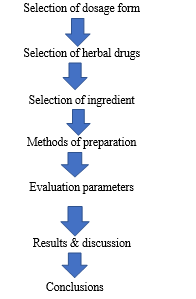
VI. FORMULATION OF TOOTHPASTE
All herbal ingredients were dried and grounded using domestic mixer. The required quantity of Ingredients were weighed and taken in mortar. Calcium carbonate, Sodium lauryl sulfate, methylcellulose, honey, and Glycerin were mixed in water. Acacia was added into the above mixture. This solution was added drop wise into mortar containing herbal ingredients and triturated well until a paste consistency is formed.
|
SR.NO |
EXCIPIENTS |
QUANTITY IN (GM) |
|
1 |
NEEM EXTRACT |
0.5 |
|
2 |
CLOVE |
0.5 |
|
3 |
PEPPERMINT |
0.5 |
|
4 |
GUAVA |
0.5 |
|
5 |
TURMERIC |
0.5 |
|
6 |
CALCIUM CARBONATE |
3.5 |
|
7 |
LICORICE |
0.5 |
|
8 |
SODIUM LAURYL SULPHATE |
0.5 |
|
9 |
ACACIA GUM |
0.5 |
|
10 |
SODIUM CHLORIDE |
0.2 |
|
11 |
GLYCERINE |
2. ml |
|
12 |
DISTILLED WATER |
q.s.ml |
VII. USES
A. Neem Extract
Neem bark is used as an active ingredient in several toothpastes and tooth powders because of its antibacterial properties. Its usage is proven to be beneficial for tooth and gums health. Herbal ingredients like Neem tree extracts have become very popular in last few years not only because of their therapeutic value but also because of no adverse side effects. Neem's pain-relieving compounds will reduce the discomfort of a toothache. The vasodilation and anti- inflammatory compounds will reduce the pressure on nerves that can cause the toothache.16 Brushing with neem toothpaste after every meal and using a mouthwash with neem extract is recommended treatment for preventing and correcting gingivitis. Neem extracts have helped millions of people in south Asia to avoid cavities despite a very limited access to modern dental care. Regular brushing with neem toothpaste and rinsing with neem mouthwash destroys cavity- causing bacteria, enhances mouth immunity, prevents tartar/plaque buildup, and subsequently freshens breath. Neem toothpastes and mouthwashes prevent cavities, heal gum diseases, and rejuvenate the tissues of the mouth. Neem contains one of the strongest natural analgesics known, results will be very apparent within 4-5 Days. One of the amazing traits of Neem is its ability to prevent cell adhesion and hence with regular use plaque becomes evident in only very small amounts.
B. Clove Extract
Cloves contain a strong anesthetic known as eugenol which similarly works as an antiseptic to fight bacteria that may cause infections. That is why cloves are so effective at fighting cavities and are often added to oral products such as toothpaste and mouthwash. Additionally, dentists mix clove oil with zinc oxide to create a temporary filling to calm the sensitive tooth nerves.
C. Peppermint
Powdered peppermint leaves have also been used historically to freshen breathe and whiten teeth. Peppermint oil, due to its antiseptic properties, is very useful in dental care. This essential oil is incredibly useful in caring for your teeth, as its antiseptic properties will fight harmful germs and bad breath. It can also make your toothpaste taste better so that you can enjoy brushing your teeth.
D. Guava Leaves
Guava leaves have long been used effectively for oral hygiene due to their antibacterial and antimicrobial properties. These properties have a positive effect on controlling plaque.
Uses of Guava Leaf in Oral Hygiene
- Reduces gum inflammation.
- Relieves pain.
- Helps to freshen breath.
- Reduces gingivitis.
- Helps to keep teeth and gum strong.
- Quick, short-term relief from toothache
E. Turmeric
Due to its anti-inflammatory properties, turmeric gel can effectively prevent plaque and gingivitis. Turmeric is also antimicrobial and anti-fungal, due to which it can also help in healing bleeding and reddening of the gums. You can use turmeric or curcumin gel as a treatment. Curcumin is the active ingredient in turmeric, so you can label it either. But remember, if you have any kind of allergy to turmeric, do not use it.
???????F. Calcium Carbonate
As a mild abrasive, opacifying and thickening agent, calcium carbonate is an essential ingredient in the preparation of natural toothpastes. It’s very gentle abrasive action gently polishes tooth enamel without damaging it. Rich in natural calcium, it can be taken internally only on the advice of your doctor.
???????G. Glycerin
Glycerin is also known to be bacteriostatic, meaning it prevents the growth of bad bacteria in your mouth which could otherwise lead to enamel damage, gum disease, and/or tooth decay. On top of that, its ability to reduce bacteria also helps to provide you with effective vegan teeth whitening.
Glycerin is proven to moisten your mouth by activating your salivary glands. Because dry mouth is a result of under- performing salivary glands, glycerin works directly to prevent and/or reduce this condition! By doing so, it consequently enhances your taste, aids your digestion, and neutralizes harmful acids in your mouth.
???????H. Acacia
Acacia arabica leads to better clinical outcomes in patients with mild to moderate chronic periodontitis with effective antiplaque and anti-gingivitis action. It may be recommended adjunct to SRP for maintenance in patients with mild to moderate chronic periodontitis. Powdered acacia can also be used in toothpaste as an abrasive to clean teeth and remove stains without being too aggressive to the surface of your teeth.
VIII. METHOD OF PREPARATION
The preparation of toothpastes may be carried out by using two methods which are as follows:
- Dry gum method.
- Wet gum method.
A. Dry Gum Method
In this method, all the solid components of the formulation like abrasive agent, binding agent etc., except the surfactants are mixed in a dry mixer. The mixer may be an agitation mixer which consists of slow rotating blades. The liquid components such as the humectants and water are gradually added to the dry mix. The mixing process is carried out till a smooth paste is formed. The remaining ingredients like the surfactants and the flavoring agents are added to the homogenous paste under vacuum.
B. Wet Gum Method
In this method, all the liquid components are mixed to form a liquid phase. The binding agent is then mixed with the liquid phase with uniform stirring in order form mucilage. The solid ingredients excluding the surfactants are then gradually added to the mucilage with uniform mixing in an agitation mixer, to form a homogenous paste. The remaining ingredients i.e., the surfactants, the flavoring agents, coloring agents are added under vacuum t the homogenous paste. Based on the principle involved in the above methods, some acceptable techniques have been proposed for the manufacture of toothpaste which is as follow:
C. Cold Compression Technique
The preparation of toothpaste using this technique can be carried out as follows.
Initially, the humectants such as sorbitol (70% w/v) or glycerin are taken in the bowl of the mixer. The binding agent is then sprinkled over the humectant under agitation for uniform dispersion.
The liquid components such as water, sweetener and the preservatives are mixed to form a separate liquid phase and any therapeutic additives if necessary are also added to the liquid phase.
This liquid phase is then added to the humectant-binder mixture in the bowl and mixing is carried out for 5 minutes in order to remove the air from the thick gelatinous liquid phase. The vacuum is stopped, and the abrasive agents are added with constant mixing until they are completely dissolved. The vacuum is reapplied, and mixing is continued for at least 30 minutes.
The surfactants and the flavoring agents are dispersed separately in 5% humectant. This mixture is added to the vacuum at the end and 5 minutes of additional mixing is carried out.
Finally, it leads to the formation of an air free smooth paste.
D. Multiple Liquid Phase Technique
This method is suitable for formulations that make use of carboxy methyl cellulose (CMC) and magnesium aluminum silicate hinder combination. The preparation can be carried out as follows:
Initially, hot water is taken in a mixer bowl and magnesium aluminum silicate is added to it.
The humectants, the flavoring agent, the binding agent, and the preservatives are mixed separately to form a separate liquid phase.
This solution is then added to the mixer and the final volume is made using the humectants.
Vacuum is introduced into bowl in order to remove the air from the liquid mixture. The vacuum is removed, and the abrasive agents are added, and the vacuum is again introduced in the mixed for 30 minutes. Finally, the surfactants are added with constant inking for 5 minutes. The method is also suitable for the preparation of clear-gel dentifrices.
E. Hot Liquid Phase Technique
The method preparation using this technique is as follows:
In this method, the abrasive agent, binding agent, and preservatives are mixed separately in a dry mixer. The humectant, sweeteners and water are mixed separately, and this liquid phase is heated.
The hot solution is then slowly added to dry powder with constant mixing. The resultant mass is then mixed under vacuum for 30 minutes.
Finally, the solutions of the flavoring agent and the surfactant are added and vacuum, mixing is carried out for 5 more minutes.
A clear and homogeneous paste is formed by this method.

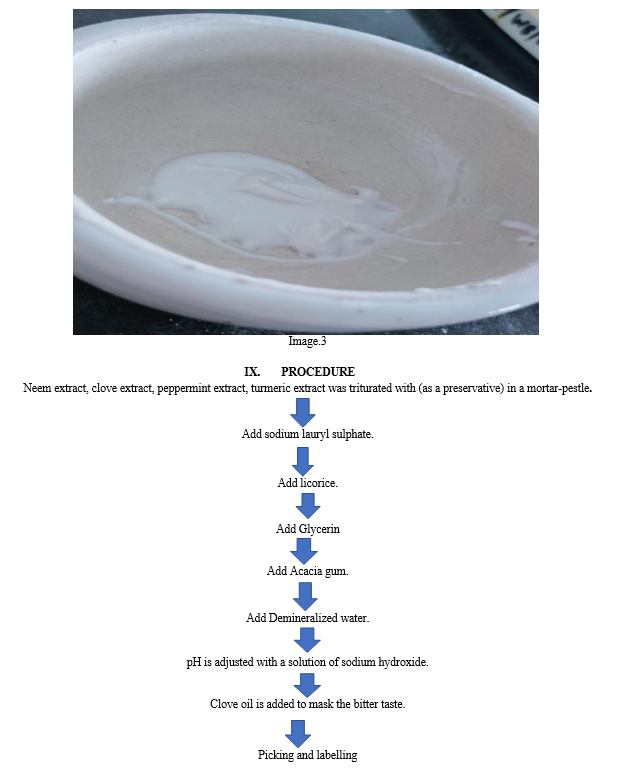
X. EVALUATION OF TOOTHPASTE
A. Physical Examination
- Colour: Formulated toothpaste was evaluated for its colour. The visually colour was checked.
- Odour: Odour was found by smelling the product.
- Taste: Taste was checked manually by tasting the formulation
- Relative Density: Relative density was determine by weight in gram taken in 10 ml formulation and 10 ml distilled water using RD bottle
B. Evaluation Parameters
Abrasiveness- Extrude the content 15-20 cm long on the butter paper, repeat the same process for at least ten collapsible tubes. Press with the contents of the entire length with fingertip for the presence of sharp- and hard-edged abrasive particles. Toothpaste shall not contain such particles.

D. Ph Determination
pH of formulated herbal toothpaste was deter-mined by using pH meter. 10g of toothpaste placed in 150ml of beaker. Allow the 10ml of boiled and then cooled water. Stir vigorously to make a suspension.
???????E. Homogeneity
The toothpaste shall extrude a homogenous mass from the collapsible tube or any suitable container by applying of normal force at 27±20C. in addition bulk of contents shall extrude from the crimp of container and then rolled it gradually.
???????F. Foaming
The foamability of formulated toothpaste evaluated by taking small amount of formulation with water in measuring cylinder initial volume was noted and then shaken for 10 times. Final volume of foam was noted.
G. Determination of Froth Power
Foaming power = V1–V2
V1- Volume in ml of foam with water. V2- Volume in ml of water only.
???????H. Stability
The stability study was performed as per ICH guideline. The formulated paste was filled in collapsible tube and stored at different temperature and humidity conditions, 25ºC± 2ºC / 60% ± 5% RH, 30º C ± 2ºC / 65% ± 5% RH, 40ºC ± 2ºC/ 75% ±5% RH for the period of three months and studied for appearance, pH and spread ability.
I. Determination of Moisture and Volatile Matter
5 g of formulation placed in a porcelain dish containing 6-8 cm in diameter and 2-4 cm depth in it. Dry the sample in an oven at 105ºC.
Calculation By mass = 100MI/M MI-Loss of mass (g) on drying M- Mass (g) of the material taken for the test.
XI. DRUG PROFILE
A. Neem Extract
- Synonym: Azadirachta indica
- Biological Sources: Neem consists of almost all the part of the plant which are used as drug of Azadirachta Indica family Meliaceae
- Mechanism of Action: Ethanolic and aqueous extract of Neem leaf showed significant anti-conidial effect against C. albicans. A clinical study demonstrated the effects of the leaf aqueous extract from Azadirachta indica (Neem) on adhesion, cell surface hydrophobicity and biofilm formation, which may affect the colonization by Candida albicans. The results suggest that Neem leaves have a potential anti-adhesive effect on the sample studied in vitro.
Anti plaque Activity
Aqueous extract of Neem stick and the gallotannin-enriched extract from Melaphis chinensis inhibited insoluble glucan synthesis and results in bacterial aggregation. It reduces the ability of streptococci to colonize tooth surfaces. Neem oil shows significant antibacterial activity and has been suggested for use in treating dental plaque. Mucoadhesive dental gel containing Azadirachta indica is found to be beneficial in reducing the plaque index and salivary bacterial count comparatively better than chlorhexidine gluconate mouthwash.
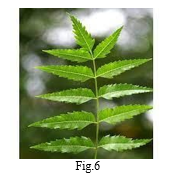
B. Clove
- Synonyms: Clove buds, Clove flowers.
- Biological Source: Clove consists of the dried flower buds of Eugenia caryophyllids Thumb., belonging to family Myrtaceous.
Mechanism of Actions
The exact mechanism of action of eugenol is unknown. However, eugenol has been shown to interrupt action potentials, which may be involved in its anti-pain activity. Research has also shown eugenol to have anti-inflammatory, neuroprotective, antipyretic, antioxidant, antifungal and analgesic properties.
Its dried flower buds are a popular spice and are also used in Chinese and Ayurvedic medicine. Clove oils, dried flower buds, leaves, and stems are used to make medicine. Clove oil contains a chemical called eugenol that might help decrease pain and fight infections. Clove is also a popular ingredient in cigarettes.
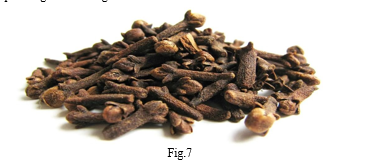
C. Peppermint
- Synonyms: Peppermint, Mentha Piperita, Mint
- Biological Source: Mint consists of the dried leaves and flowering tops of Mentha piperita L family Liliaceae
Mechanism Of Actions
Rinsing with diluted peppermint oil can solve bad breath or bad tastes in the mouth. Mixing peppermint oil with toothpaste while brushing can help clean the teeth and gums better which improves your oral health.
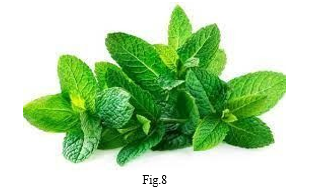
D. Turmeric
- Synonyms: Halide. Harindra Indian Saffron.
- Biological Source: It obtained from the rhizome of curcuma longa family Zingiberaceae
Mechanism Of Actions
The action of curcumin on markers of oxidative stress is associated with its properties directed to the removal of reactive oxygen and nitrogen, metal chelation, and regulation of numerous enzymes. curcumin has therefore been proven to be an antioxidant.
5 Curcumin exerts anti-inflammatory effects by regulating inflammatory signalling pathways and inhibiting the production of inflammatory mediators (Figure 2). The regulatory effect of curcumin on inflammatory signalling pathway.
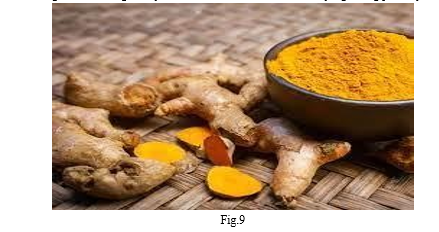 ???????
???????
Conclusion
The herbal toothpaste is an emphasizing and more acceptable in dental research and they are. safer with minimum side effects than synthetic preparation. The formulated tooth paste. complied the requirements of all evaluation tests and was found suitable for the teeth and oral. hygiene. The formulated herbal toothpaste has good scope in future in nature remedies. Research and dental health of public.
References
[1] https://www1.deltadentalins.com/wellness/healthy-habits/articles/toothpaste- ingredients.html#:~:text=Fluoride,sodium%20monofluorophosphate%20or%20stannou s%20fluoride [2] https://www.cdc.gov/oralhealth/conditions/index.html#:~:text=Print-,Oral%20Health%20Conditions,)%20disease%2C%20and%20oral%20cancer [3] https://en.m.wikipedia.org/wiki/Toothpaste [4] https://rjptonline.org/HTMLPaper.aspx?Journal=Research%20Journal%20of%20Phar macy%20and%20Technology;PID=2014-7-9- 14#:~:text=Neem%2C%20has%20pain%2Drelieving%20compounds,that%20cause%2 0Pyorrhea%20and%20Gingivitis [5] https://carrumdownsdental.com.au/benefits-of-cloves-for- toothaches/#:~:text=Cloves%20contain%20a%20strong%20anaesthetic,such%20as%2 0toothpaste%20and%20mouthwash [6] https://www.metropolisindia.com/blog/health-wellness/top-4-effective-home-remedies- for-healthy-gums-and- teeth/#:~:text=Uses%20of%20guava%20leaf%20in%20oral%20hygiene%3A&text=Hel ps%20to%20freshen%20breath,short%2Dterm%20relief%20from%20toothache [7] https://bioflore.be/en/cosmetic-ingredients/1162-calcium- carbonate.html#:~:text=As%20a%20mild%20abrasive%2C%20opacifying,the%20advi ce%20of%20your%20doctor [8] https://davids-usa.com/blogs/davids-blog/important-role-of-glycerin-in-your-vegan- toothpaste#:~:text=Glycerin%20is%20also%20known%20to,with%20effective%20vega n%20teeth%20whitening [9] https://sprinjene.com/blogs/news/acacia-gum-its-benefits-and- uses#:~:text=The%20extract%20of%20a%20species,the%20surface%20of%20your%2 0teeth [10] https://www.colgate.com/en-in/oral-health/selecting-dental-products/what-is-salt- toothpaste#:~:text=A%20key%20ingredient%20in%20salt,of%20salt%20(sodium%20 bicarbonate) [11] https://www.google.com/url?sa=t&source=web&rct=j&url=https://www.ncbi.nlm.nih.go v/pmc/articles/PMC3819475/%23:~:text%3DSyzygium%2520aromaticum%2520(S.,Ma luku%2520islands%2520in%2520east%2520Indonesia.&ved=2ahUKEwi39bLMspj_AhX4lFYBHY-aC2YQFnoECBgQBQ&usg=AOvVaw2wUGOYCwzrnLAJo2EZuJMx [12] https://www.google.com/url?sa=t&source=web&rct=j&url=https://www.pharmacy180.c om/article/clove-247/&ved=2ahUKEwi39bLMspj_AhX4lFYBHY- aC2YQFnoECCQQAQ&usg=AOvVaw3m9bdypD00dpGp2pkfBjhs [13] https://www.google.com/url?sa=t&source=web&rct=j&url=https://en.m.wikipedia.org/ wiki/Clove&ved=2ahUKEwi39bLMspj_AhX4lFYBHY- aC2YQFnoECCgQAQ&usg=AOvVaw3ewArSbXhe9BLbN4mmDfMK [14] https://www.google.com/url?sa=t&source=web&rct=j&url=https://www.mountsinai.org /health-library/diseases-conditions/dental- cavities&ved=2ahUKEwjqzvmPtJj_AhUoa2wGHWkQAQcQFnoECCoQAQ&usg=AOv Vaw0ywxJfSbqeFNPQRnRQU5Eu [15] https://www.google.com/url?sa=t&source=web&rct=j&url=https://www.nidcr.nih.gov/h ealth-info/tooth-decay/more-info/tooth-decay- process&ved=2ahUKEwjqzvmPtJj_AhUoa2wGHWkQAQcQFnoECDUQAQ&usg=AO vVaw0jhlFiiqtb-9okidyCAnMO
Copyright
Copyright © 2023 Madhuri Khandgaonkar, Bhagyashri Gayke, Anjali Shinde. This is an open access article distributed under the Creative Commons Attribution License, which permits unrestricted use, distribution, and reproduction in any medium, provided the original work is properly cited.

Download Paper
Paper Id : IJRASET54838
Publish Date : 2023-07-18
ISSN : 2321-9653
Publisher Name : IJRASET
DOI Link : Click Here
 Submit Paper Online
Submit Paper Online

